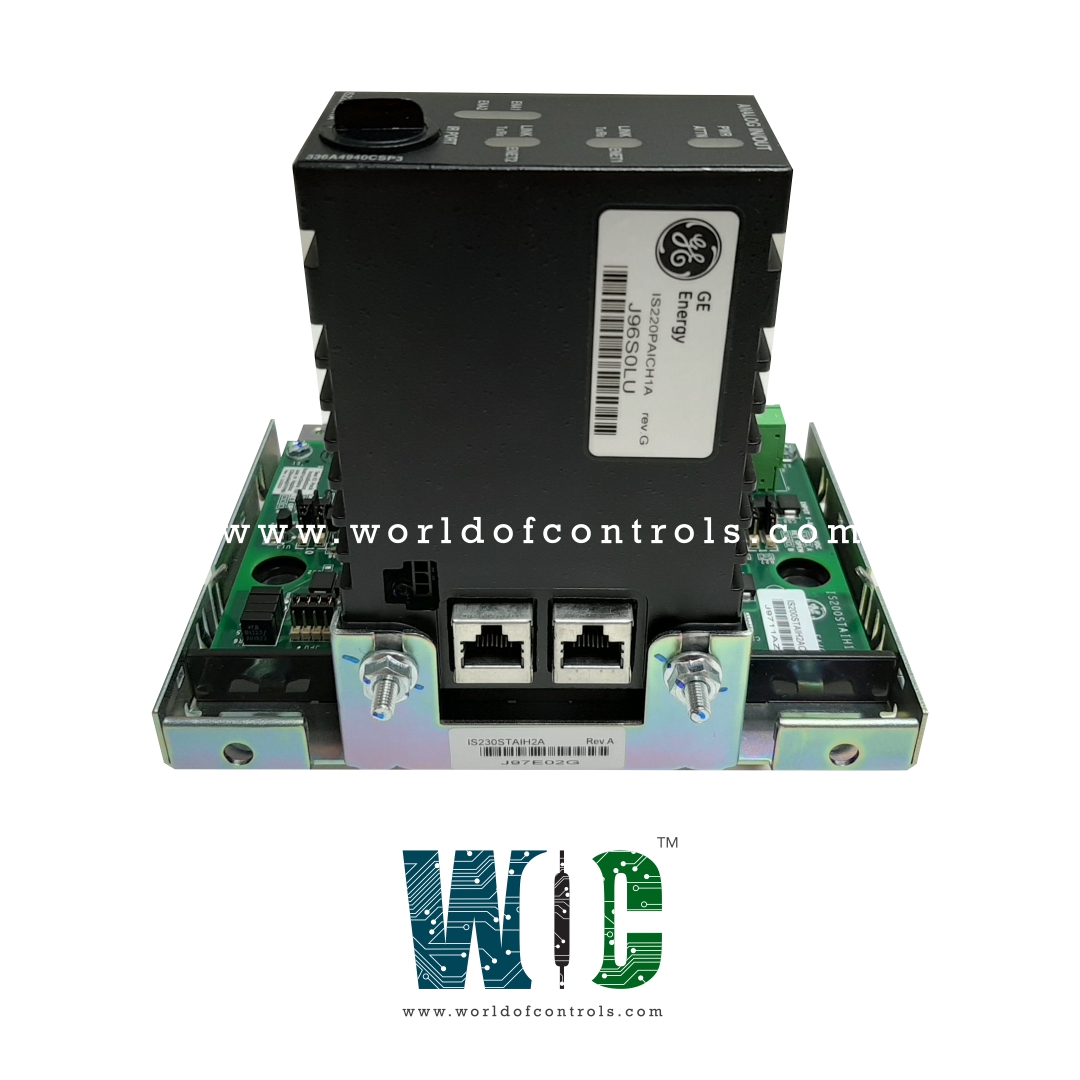
World Of Controls understands the criticality of your requirement and works towards reducing the lead time as much as possible.
IS230STAI2ASTAI2AG01 - Simplex Analog Input Terminal Board is available in stock which ships the same day.
IS230STAI2ASTAI2AG01 - Simplex Analog Input Terminal Board comes in UNUSED as well as REBUILT condition.
To avail our best deals for IS230STAI2ASTAI2AG01 - Simplex Analog Input Terminal Board, contact us and we will get back to you within 24 hours.
SPECIFICATIONS:
Part Number: IS230STAI2ASTAI2AG01
Manufacturer: General Electric
Series: Mark VIe
Number of Channels: 12
Microprocessor: Intel Celeron 650 MHz
Memory: 128 MB DRAM
Operating system: QNX
Programming: Boolean
Product Type: Simplex Resistance Temperature Detector Input Card
Operating temperature: 0 to 65° C
Technology: Surface mount
Size: 16.2 cm high x 8.6 cm
Repair: 3-7 Day
Availability: In Stock
Country of Origin: United States
Manual: GEh-6721D
FUNCTIONAL DESCRIPTION:
IS230STAI2ASTAI2AG01 is a Simplex Analog Input Terminal Board manufactured and designed by General Electric as part of the Mark VIe Series used in GE Distributed Control Systems. The Simplex Analog Input (STAI) terminal board is a compact analog input terminal board that accepts 10 analog inputs and two analog outputs and connects to the pack. The 10 analog inputs accommodate two-wire, three-wire, four-wire, or externally powered transmitters. The two analog outputs are 0-20 mA but one can be jumper configured to 0-200 mA current. Only a simplex version of the board is available. High-density Euro-block type terminal blocks are used. An onboard ID chip identifies the board to the pack for system diagnostic purposes.
INSTALLATION:
The STAI plus a plastic insulator mounts on a sheet metal carrier that then mounts on a DIN rail. Optionally, the STAI plus insulator mounts on a sheet metal assembly and then bolts directly to a cabinet. STAI_2 has a right-angle header accepting a range of commercially available pluggable terminal blocks, with a total of 48 terminals. Typically #18 AWG wires (shielded twisted pair) are used. I/O cable shield terminal is provided adjacent to the terminal blocks. The following types of analog inputs and outputs can be accommodated:
WOC has the largest stock of OEM Replacement Parts for GE Distributed Turbine Control Systems. We can also repair your faulty boards and supply unused and rebuilt boards backed up with a warranty. Our team of experts is available round the clock to support your OEM needs. Our team of experts at WOC is happy to assist you with any of your automation requirements. For pricing and availability on parts and repairs, kindly contact our team by phone or email.
What are the typical applications of the Simplex Analog Input Terminal Board?
It is commonly used in industrial control systems for monitoring variables like temperature, pressure, and flow rates.
How many input channels does a Simplex Analog Input Terminal Board support?
The number of input channels varies, but it typically supports multiple channels (e.g., 8 or 16) to accommodate various analog sensors.
What type of analog signals can the board handle?
The board supports standard analog signal types like 4-20 mA, 0-10V, and other industry-standard input signals.